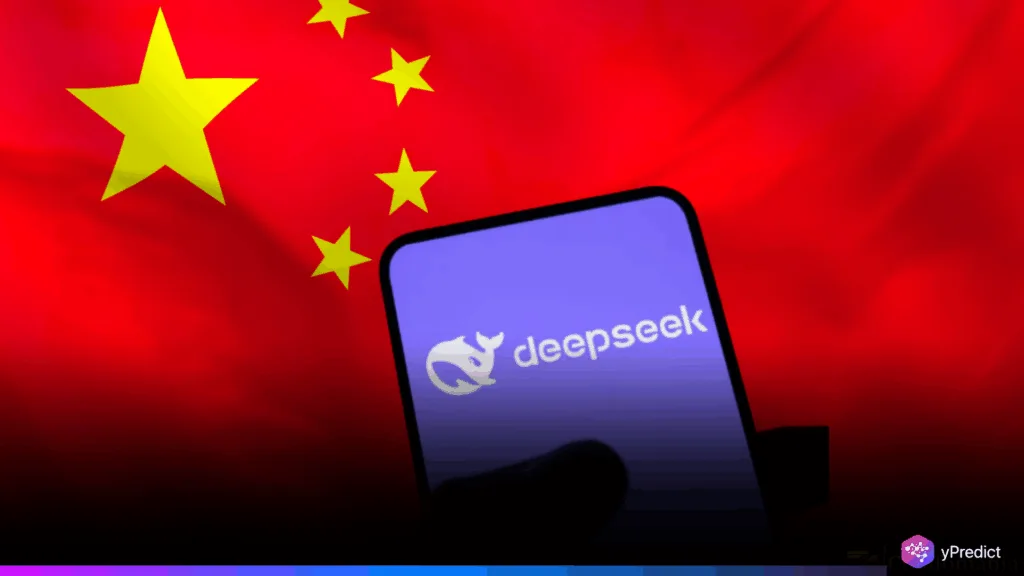
China is gearing up for a surge in artificial intelligence breakthroughs, with over 100 DeepSeek-like innovations expected within 18 months, according to Zhu Min, former deputy governor of the People’s Bank of China. According to Zhu, speaking at the World Economic Forum in Tianjin, AI is going to radically transform the tech makeup of the Chinese economy in the near future. Driven by the miracle of an overwhelming number of engineers, huge consumer volume, and the support of government policy, China is hoping to take over the next stage of AI development the world is undergoing. This shift has the potential to push contributions to GDP to more than 18 percent in 2026.
DeepSeek Triggers a National AI R&D Renaissance
Zhu Min credits DeepSeek, China’s low-cost, high-performance AI models, with igniting a new era of software innovation. Its unexpected rise stunned global observers and bolstered confidence in China’s ability to create competitive AI solutions independent of U.S. technology. According to Zhu, DeepSeek is just the start: he forecasts more than 100 comparable AI models within the next year and a half, across sectors from finance to biotechnology.
This momentum is because of the peculiar ecosystem in China. A vast, tech-savvy labor force; a centralized administration wanting to spend; and a business culture that can quickly amplify innovation. It is already happening, and the Chinese technology stocks rallied after DeepSeek, and the desire to invest in AI is speeding up. Bloomberg reports that tech’s share of China’s GDP rose to 15% in 2024 and is on track to hit 18% by 2026.
Beyond economics, China is positioning AI as a strategic lever to reduce foreign reliance and project geopolitical strength. Huawei and others are stepping in to fill the chip void left by U.S. export controls. From automated logistics to digital healthcare, Zhu sees AI not just as a productivity tool but as the foundation for China’s digital sovereignty and its next quantum leap in development.
AI at the Heart of U.S.-China Tech Rivalry and Global Trade Tensions
The global AI race is increasingly defined by U.S.-China competition. Washington has blocked Chinese access to Nvidia’s top-tier AI chips, citing national security risks, while restricting tools for advanced chipmaking. In response, Beijing has doubled down on local alternatives, using companies like Huawei and DeepSeek to prove China can remain competitive despite external constraints. Zhu Min warns that beyond tech, these tensions carry economic ripple effects. Speaking in Tianjin, he predicted that new U.S. tariffs could reignite inflation by August, once pre-tariff inventories run out and supply chain pressures return. He added that these policies risk dampening global trade and investment, especially in high-tech sectors like AI.
This geopolitical divide has strategic implications. The EU pursues a strict AI regulatory framework, while the U.S. remains fragmented, creating openings for countries like China to leap ahead in implementation. AI is also reshaping national priorities. Zhu described hyperscale data centers, like those being co-developed by SK Group and AWS in Korea, as “national assets” essential to tech sovereignty. With AI now influencing economics, diplomacy, and military capabilities, both China and the U.S. are racing to define the rules of engagement for the next digital age, one algorithm at a time.
AI as the Cornerstone of China’s Economic Repositioning
Zhu Min believes AI chips will be the cornerstone of China’s fourth industrial revolution. In his address at the World Economic Forum, he described a world in which AI transforms not only software but the rest of the economic system, including autonomous manufacturing and biotechnology. AI offers an opportunity to dominate the world, although Chinese ambitions are worn out. China is placing its bet on AI with government funding, engineering talent, and national ambition coupled together. Innovations like DeepSeek signal a shift toward tech self-reliance, as U.S. sanctions cut off key imports. Zhu called this “the time to reindustrialize,” with AI driving efficiency and global relevance.






